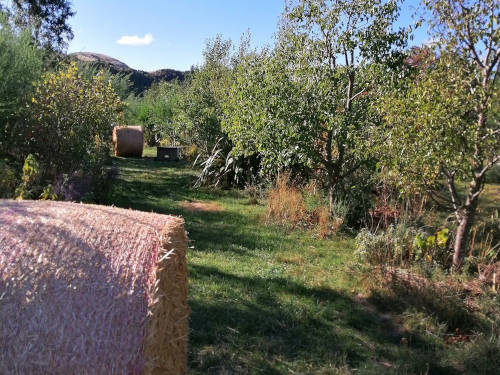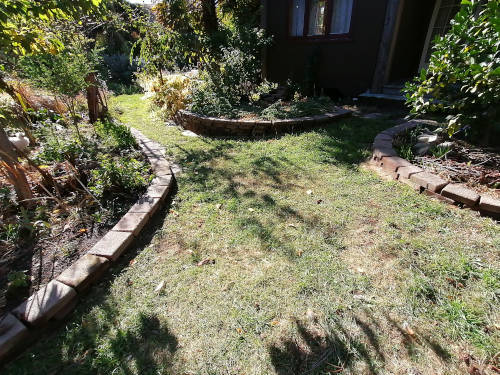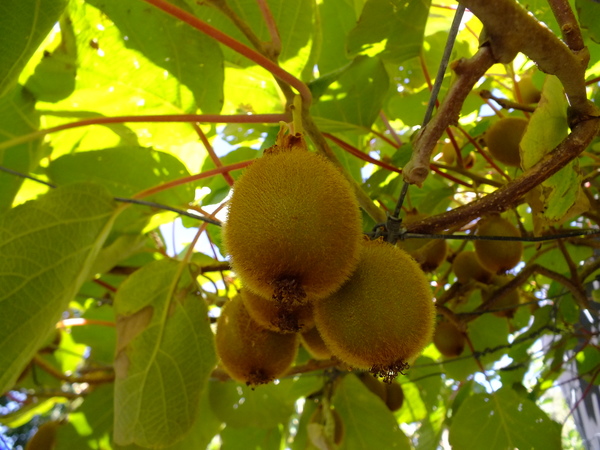Managing energy and resource flows
As part of our ongoing efforts to improve the underlying structure of our landscape and harness the natural energy flows of water, wind and sun I once more find myself hauling heavy loads of straw around the garden.
This season we took delivery of 2 large square bales of pea straw (part of a truckload from mid Canterbury) and 2 round bales of fresh oat straw from a local grower whom I assist with computer work.
No only does the straw contain useful minerals and other elements, it will keep the soil covered, insulated and provide habitat to all sorts of small creatures. The hollow straws have a huge amount of surface area and are excellent for holding moisture and air. As an added bonus there are still quite a few pea seeds that have come along for the ride and while some will get eaten I have seen previously how many will grow, further helping to cover the ground and enrich the soil while creating a food source.
Round bales have the advantage that they can be manoeuvred by rolling. Once the nasty plastic netting that wraps them has been cut they are no longer movable and I deconstruct them onto a large square of wind netting that I then drag to the final distribution location. The square bales are unmovable but can be easily broken down into flat slabs that can be moved about on wind netting.
In addition to the straw I came across a deal that was too good to pass up - free concrete pavers. So all I have to do is lift and transport around 700 flat, heavy concrete blocks. This is essentially a process of converting one off expenditure of fossil fuel into long term solar thermal mass.
By strategically stacking the pavers in useful locations it is possible to suppress weeds, create wind protection and capture solar thermal radiation (heat) for radiation at night. This helps to moderate the temperature and assist young plants sensitive to the cold. The gaps and cracks between the blocks provide habitat for lizards and small frogs who enjoy the warmth and safety.
In keeping with the permaculuture ethos of combining and stacking functionality, I have incorporated a number of the pavers into a water feature, holding up a white enamelled cast iron bath that is enjoyed by our ducks. They enrich the water that eventually overflows or is flushed out to nourish the surrounding plantings. The volume of water adds additional heat trapping capacity and the reflectivity of the white enamel and waters surface scatters sunlight back up into the nearby leaves to boost photosynthesis.






